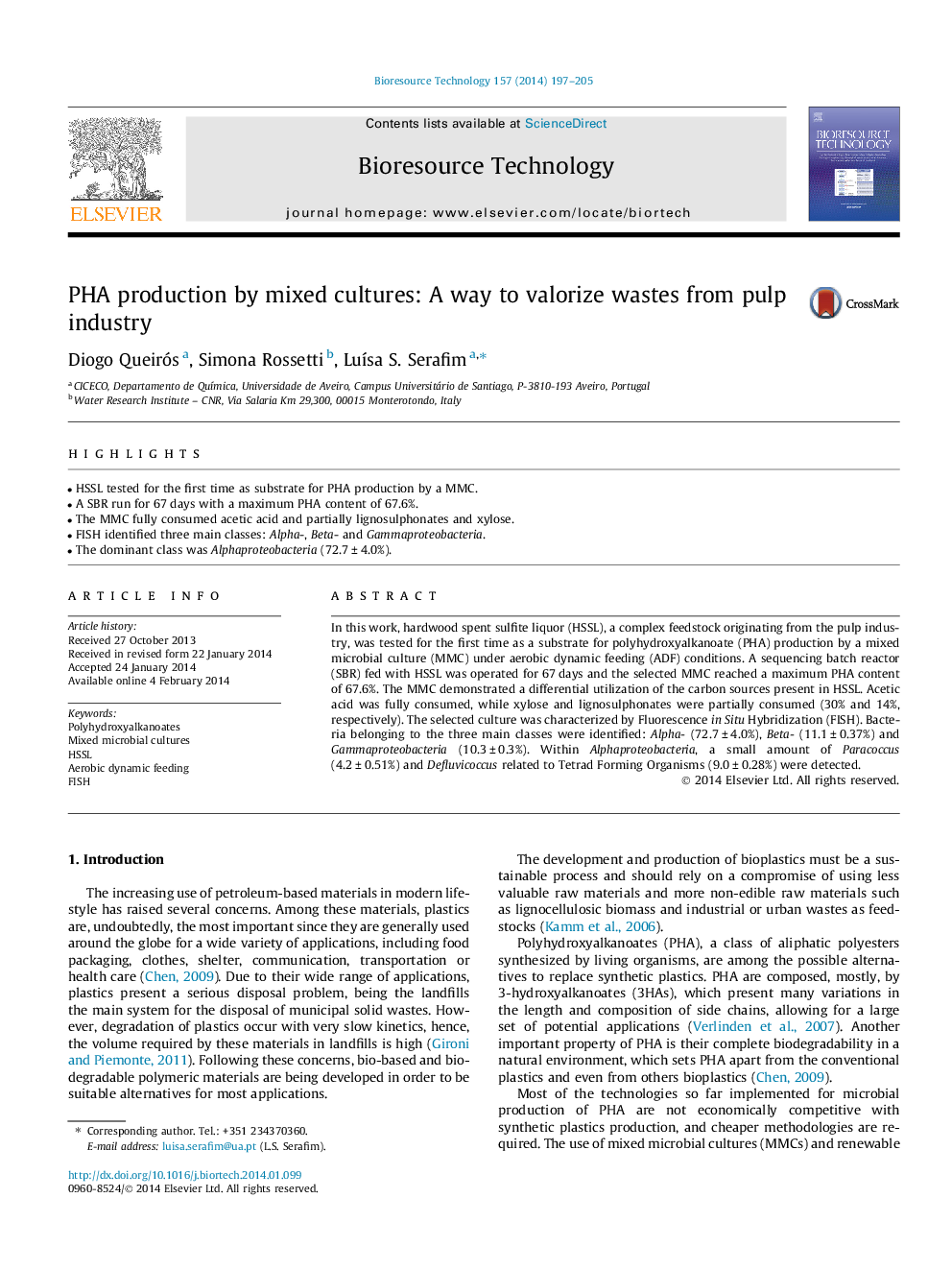| Article ID | Journal | Published Year | Pages | File Type |
|---|---|---|---|---|
| 680938 | Bioresource Technology | 2014 | 9 Pages |
•HSSL tested for the first time as substrate for PHA production by a MMC.•A SBR run for 67 days with a maximum PHA content of 67.6%.•The MMC fully consumed acetic acid and partially lignosulphonates and xylose.•FISH identified three main classes: Alpha-, Beta- and Gammaproteobacteria.•The dominant class was Alphaproteobacteria (72.7 ± 4.0%).
In this work, hardwood spent sulfite liquor (HSSL), a complex feedstock originating from the pulp industry, was tested for the first time as a substrate for polyhydroxyalkanoate (PHA) production by a mixed microbial culture (MMC) under aerobic dynamic feeding (ADF) conditions. A sequencing batch reactor (SBR) fed with HSSL was operated for 67 days and the selected MMC reached a maximum PHA content of 67.6%. The MMC demonstrated a differential utilization of the carbon sources present in HSSL. Acetic acid was fully consumed, while xylose and lignosulphonates were partially consumed (30% and 14%, respectively). The selected culture was characterized by Fluorescence in Situ Hybridization (FISH). Bacteria belonging to the three main classes were identified: Alpha- (72.7 ± 4.0%), Beta- (11.1 ± 0.37%) and Gammaproteobacteria (10.3 ± 0.3%). Within Alphaproteobacteria, a small amount of Paracoccus (4.2 ± 0.51%) and Defluvicoccus related to Tetrad Forming Organisms (9.0 ± 0.28%) were detected.
